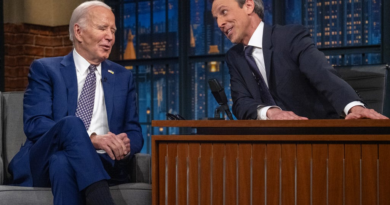Trio who proved quantum mechanics is really weird—and useful … – Science
In a citation many physicists expected for decades, this year’s Nobel Prize in Physics honors three researchers who probed a weird quantum mechanical phenomenon called entanglement, paving the way for the burgeoning fields of quantum communications and quantum computing.
Two of them, John Clauser of J.F. Clauser & Associates and Alain Aspect of the University of Paris-Saclay and the Polytechnic Institute of Paris, proved quantum entanglement—which Albert Einstein derided as “spooky action at a distance”—cannot be explained by more intuitive classical physics. The third, Anton Zeilinger of the University of Vienna, showed how entanglement can be used to, for example, “teleport” information from one subatomic particle to another. The three share the 10 million Swedish kronor ($915,000) prize equally.
“I’m absolutely thrilled,” says Adrian Kent, a quantum physicist at the University of Cambridge. “The recognition is overdue for these giants in the field.” Ronald Hanson, a quantum physicist at the Delft University of Technology, says, “It’s a beautiful prize.” The laureates’ work “has basically opened up this whole field of quantum information science and technologies,” he says.
The tale of entanglement stretches back to 1935 and Einstein’s discontent with the contingent nature of quantum mechanics. Quantum theory states that the properties of an object such as an electron depend on how the thing is measured. Precisely measure the electron’s position and its momentum becomes uncertain and unpredictable, and vice versa. So it can have a definite position or momentum, but not both. Einstein insisted that a particle’s position and momentum ought to be “elements of reality” that exist independent of being measured. He suggested behind the veil of quantum uncertainty, “hidden variables” predetermine those values.
In 1964, British theorist John Bell proposed a test of that idea. Bell noted that two quantum particles can be entangled so that even though the state of each individual particle is uncertain, their two states are entirely correlated. For example, a photon can be polarized horizontally, vertically, or—according to quantum mechanics—both ways at once, which leaves its polarization uncertain. However, two photons can be entangled so that even though the polarization of each is uncertain, they are guaranteed to be polarized in the same way.
Roughly speaking, Bell imagined two observers, Alice and Bob, sharing entangled pairs of photons and comparing their measurements. Each has a polarization analyzer that can be randomly oriented, and when the two analyzers aren’t aligned, the correlations between Alice’s and Bob’s measurements drop to less than 100%. Still, Bell showed that if hidden variables determine the result of their measurements, the remaining correlations can only be so strong. But, quantum mechanics predicts they will be stronger. If experimenters could observe those correlations, then, surprisingly, they could disprove the existence of hidden variables.
In 1969, Clauser, then at Columbia University, led a team that refined Bell’s general idea so that it could be applied to an actual experiment with calcium atoms. In 1972, he and another colleague performed the experiment, observed the extra-strong correlations predicted by quantum theory, and provided a first test of Bell’s theorem.
Such experiments are tricky, however, as they require ruling out all influences that could allow the output of one analyzer to affect that of the other and produce spurious correlations. In the 1980s, Aspect and his team performed much-refined versions of the experiments, including modifications such as effectively choosing the analyzers’ orientations only in the nanoseconds after the photons were emitted. However, it wasn’t until 2015 that Hanson and his team performed a so-called loophole free experiment.
If Clauser and Aspect used entanglement to prove that quantum mechanics is every bit as weird as advertised, Zeilinger pioneered the use of it as a tool. For example, in 1998, his team showed how it could take two pairs of entangled photons and swap the entanglement so that one photon from the first pair ends up entangled with one photon from the second—a technique that could prove essential for connecting distant nodes in an unhackable quantum internet. Zeilinger’s group also showed it could use an ancillary entangled pair of photons to instantly transfer or “teleport” the exact quantum state of one photon to another.
Such work seeded the growth of quantum information science and quantum computing, booming fields that seek to use entanglement and other effects to perform technological feats unobtainable with classical electronics. Such potential was hardly clear decades ago, notes Jian-Wei Pan, a quantum physicist at the University of Science and Technology of China, who was Zeilinger’s graduate student in the 1990s. “Many years ago, people didn’t think quantum information was real science,” he says. “Information scientists did not like it and pure basic researchers also didn’t like it.” Now, it is perhaps the hottest area in physics.
As much as this year’s prize celebrates the potential of quantum information science, it also underscores a prize that was never awarded. “John Bell should have been recognized” with a Nobel Prize, Pan says. “Unfortunately, quantum information science had still not yet emerged when he passed away.” Bell died in 1990 at the age of 62.
Staff Writer
Don’t yet have access? Subscribe to News from Science for full access to breaking news and analysis on research and science policy.
Help News from Science publish trustworthy, high-impact stories about research and the people who shape it. Please make a tax-deductible gift today.
If we’ve learned anything from the COVID-19 pandemic, it’s that we cannot wait for a crisis to respond. Science and AAAS are working tirelessly to provide credible, evidence-based information on the latest scientific research and policy, with extensive free coverage of the pandemic. Your tax-deductible contribution plays a critical role in sustaining this effort.
© 2022 American Association for the Advancement of Science. All rights reserved. AAAS is a partner of HINARI, AGORA, OARE, CHORUS, CLOCKSS, CrossRef and COUNTER.



